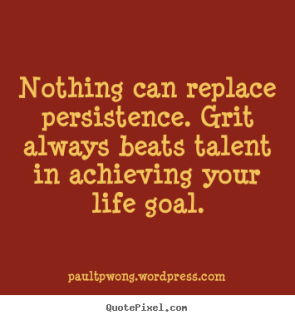Last Wednesday night while coaching football, I decided to show the high school kids a thing or two. We reached the end of practice and we were finishing the session up with some competition – a little one-on-one drill. It’s pretty simple, the receivers try to get open by using the technique and tricks that I taught them during their individual session, and the defensive backs are tasked to lock them down.
Our defensive backs coach, Jeffery Solomon (aka, Solo), played for WSU and also in the Arena League for several years. He is a beast, still under 30 years old, and could strap up and be an impact player at most D-I programs right now. It’s pretty awesome when your coach can dominate you…in the end, kids do what you do, not what you say. Well, Solo jumped into the one-on-one drills and was balling on these young guys. Watching this, I got the itch to get in on the competition and dust the old white boy receiver skills off and show them how it’s done.
Solo making plays vs. UCLA
In my mind I envisioned myself being like Julian Edleman carving up the Atlanta Falcon’s defense in the Super Bowl. After all, I once was a 4-year starter in the Pac-10 (now Pac-12), “I can take these high school kids,” I thought, “I got dang near 20 years of experience on these guys, I got this!” I didn’t have any cleats…no big deal. No receiver gloves, no problem! The fact that I had the Norovirus the weekend before didn’t even hold me back either (no food for several days…no biggie!).
My first rep didn’t go so well. I guess I’m not as strong as I used to be. The second rep, I dropped the ball over the middle…where did my “sure hands” go? The third rep, the ball got tipped away at the last minute. I kept jumping in expecting a different result, but instead of being Edleman, I was more like Pee-Wee Herman. I only caught 3 balls out of 10…are you kidding me?!! That’s it…only 3 balls?…that’s a 70% failure rate!
When we finished, I walked to my car, pulled my hood over my head and zipped up my jacket feeling the cold winter wind chill rush all over me. I don’t know what stung worst, the cold, or my lack luster performance. My legs were wobbly and my ego definitely dropped a few notches. This type of performance could have put me into official retirement, but this time around, being much older and wiser, I’m approaching this situation differently than when I was my younger immature self.
As I pulled into the driveway when I got home, I had already made the decision to give that drill another try. I envisioned what cleats and gloves I was going to wear, and even visualized a few routes that I know will work. I walked into my house excited for the next time. I knew that my credibility as a coach and an athlete were not defined by that one failure. I didn’t win that day, but I knew that the next time would be better and that I could learn and grow from that experience to attack the next competition with excitement and gratitude.
It’s taken me 36 years to have that kind of a mindset. When I was a student-athlete or even in the professional world of medical sales, I had the opposite mindset. I felt like I constantly had to “prove” myself, which ended up hindering my performance…with each move or step, I would constantly evaluate myself and picture what others thought of me. I was constantly comparing. This mental approach no doubt hindered my ability to compete at peak performance. For many, past failures exacerbate fears of feature failure. This cycle creates self doubt and often times anxiety.
These internal fears and anxiety lead people to give up, quit, or avoid being put into similar situations again. Thus, their true potential is never fully actualized.
Performance anxiety is a real thing, and for some reason,
NO ONE IS TALKING ABOUT IT.
Here are some alarming stats:
- 32% of teens suffer from some form of anxiety – National Institute of Health
- 85% of collegiate athletic trainers report that anxiety hinders their student-athlete’s ability to perform at their best. – NCAA.org
- 40 million American adults (18.1%) suffer from anxiety. – National Institute of Mental Health
These are just reported cases covering a broad spectrum. There just isn’t much data on evaluating specific areas and ways to not only cope, but to discuss and find strategies to improve self limiting beliefs as a collective group.
Whether it is being super stressed before taking a test, feeling like a nervous wreck when your supervisor is evaluating you, or feeling anxious before a big game or presentation, we need to acknowledge that being nervous, stressed, and anxious is a natural human emotion that needs to be better addressed.
According to Dr. Heidi Grant, performance psychologist at Columbia University, the brain can hold 5 to 7 thoughts or ideas at one time. When the brain is in a state of anxiety, it can only hold 2 to 3 concepts. When we are operating in an anxious state and constantly trying to “prove” ourself, we are living in what Grant calls a “Be Good” mindset. Individuals with a “Be Good” mindset avoid failure, constantly compare, and seek validation in performance only. They have the idea that they have to “be good” at something in order to be a good person. This mindset is definitely part of the anxiety problem.
Does this sound familiar to you or anybody you know, lead, or coach?
While at our national sales meeting in Miami a few weeks ago, I had the pleasure of listening to Dr. Grant lecture in person on this topic. My pen and note taking skills were working overtime! I was soaking in her insights and felt like she was talking about me and my former self.
The goal, she says is to have a “Get Better” mindset (Stanford’s Dr. Carol Dweck calls it a “Growth” mindset, which if you have followed this blog, you have heard me mention this before). Instead of focusing on PROVING yourself, try to focus on IMPROVING yourself. We all are a work in progress and no one is perfect. Fear of failure is the enemy to creativity and performing at your best…no matter the area…work, socially, athletically, etc. When your thought process is all about PROGRESS not PERFECTION, what happens is powerful, you will start to perform better.
The best operate with this philosophy…they are not defined by their failure. What do you think Tom Brady was thinking after he threw that pick 6 and was down 25 points in the 3rd quarter of the Super Bowl? The reason why he is the GOAT (Greatest Of All Time) is that he learns from his mistakes; he uses them to grow; and he expects the best is yet to come. Other people’s opinion’s don’t matter, just his own and those in his locker room. Brady fails, thus he succeeds He succeeds, because he fails.
The Patriots are the personification of PASSION meets PERSEVERANCE.
Most of the entire New England Patriot’s roster is full of rejects, misfits, and “failures” who are filled with GRIT. Someone needs to do a deep study on their model because 7 Super Bowls and 5 rings tells me that Belichick and Brady have this “Get Better” Mindset down to a science. This example should give you hope that if at first you don’t succeed, keep grinding, keep pushing, keep competing, and your day will come…
You are not defined by your failure, but how you react and grow from it!
Newly hired Minnesota Gopher Football Coach, PJ Fleck, has mentioned multiple times that he recruits kids that have failed. He looks for coaches who have failed. He focuses his whole program around surrounding himself, his staff, and players with individuals who have failed and have GRIT – passion and perseverance. Talent does not beat skill. Talent might pass the eye test and win early, but skill is something that is developed over time. With an insane work ethic, and a thirst to win the war, not just the battle, you will improve your Grit, thus improve your likelihood to achieve your long term goals.
The Mount Rushmore of Performance Psychologists and my favorites…read their books!
Grit: The Power of Passion and Perseverence, by Angela Duckworth
9 Things Successful People Do Differently, by Heidi Grant
Mindset: The New Psychology of Success, by Carol Dweck
Penn’s Angela Duckworth, studied and wrote a book about Grit and the power of passion and perseverance. Many prominent leaders in business and sports are trying to tap in this new science of understanding grit and how to identify it and coach it. Seahawks head coach Pete Carroll has even brought Duckworth into to speak to his team to change their lens on failure and persevering.
Grant, Duckworth, and Dweck agree…find individuals that have grit, and you’ll build a winning culture and team. This mindset retools how we look at failure.
The statement, “I’m not good,” should not be in your vocabulary. Instead, you should say, “I’m not there yet.”
This philosophy will help lower some of that anxiety. The threat of a loss will soon lose its crippling power. When you approach competition and life with a “Get Better” or “Growth” mindset, this approach turns failure into a stepping stone for improvement, instead of being a road block.
Here are some tips to lower anxiety and improve performance with a healthy mindset:
Leaders, Teachers, Coaches, and Parents:
- Reward the right thing: effort, unselfishness, and perseverance instead of outcomes only
- Institute the 5-Minute Rule…before any coaching, teaching, or feedback takes place; check in with others on a human level for 5 minutes. Let them feel that you value them as a person, not just as a cog in the big machine that serves you
- When giving feedback, make it more process driven versus result driven (for example a player misses a shot, instead of saying, “Make the shot!” Say, “Balance your feet first, then shoot! You got this!”)
Individuals in Non Supervisor, Manager, or Coaching roles:
- Develop daily routines – mentally and physically – create your “process”
- Have multiple level goals all funneling into the same BIG end goal (this will keep you on your path)
- View yourself as a “work in progress,” Rome wasn’t built in a day and nor are you
- Seek self-love outside of one area of your life (you are more than just a sales rep, an athlete, insurance agent, car salesman etc.)
- Know that you are not perfect (no one is) and use failure to build your knowledge and skill sets
If you take the advice above, you’ll be well on your way to being the best version of you.
I can’t wait to apply these tactics next week at my wide receiver’s practice. With my “Get Better” mindset and going all-in on believing and demonstrating GRIT, I’m confident my walk back to my car after a session of competing in one-one-one drills, I’ll have my chest out; I’ll be walking with swag feeling the wind at my back (healthy mindset) instead of it pushing me back (unhealthy mindset). I’ll keep you posted! In the meantime, check out this 6 minute video of Dr. Duckworth talking about GRIT.







